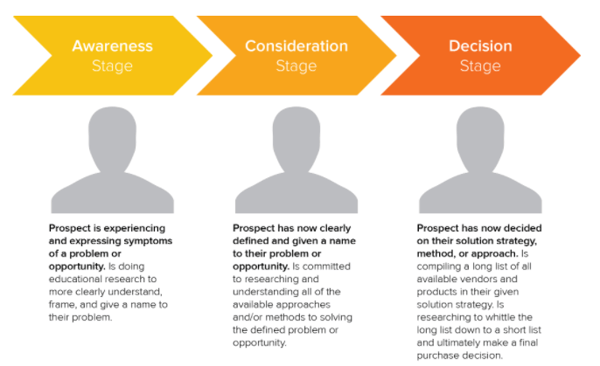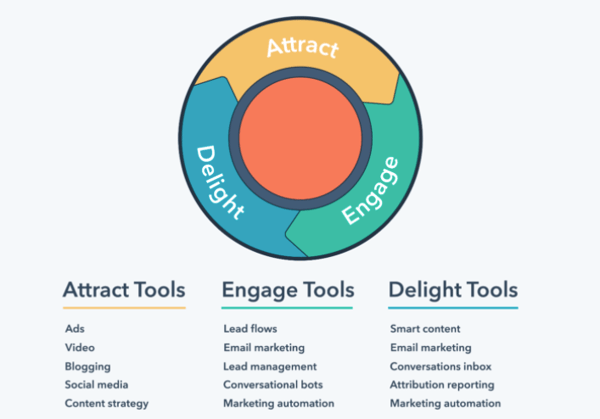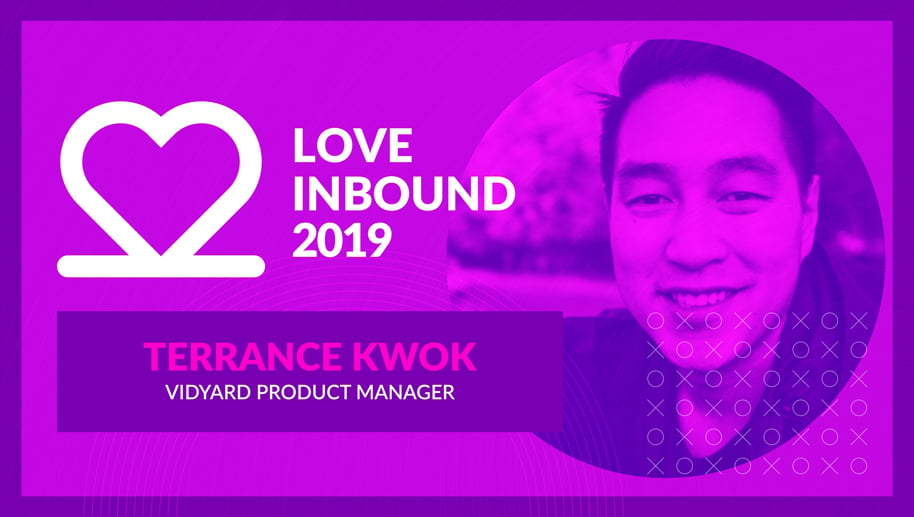A lot of people are asking how to do inbound marketing. It’s a style of marketing that’s fresh, original, provides value for customers and ultimately increases your conversion rate.
In a recent survey, only 13% of marketers said that outbound was gaining them a higher ROI, whereas 53% said inbound techniques guaranteed a higher return.
Curious about how to do inbound marketing like a pro? Digital 22 are here to help.
Inbound vs outbound
Unlike traditional outbound marketing, inbound tactics don't fight for the customer's attention. It attracts customers by providing them with relevant content at every stage of their buying journey. This can be content such as blogging. Marketers who prioritise blogging efforts are 13x more likely to see positive ROI.
Think about every time you had a problem and turned to Google for a solution. The more research that you do, the more you find out about both your problem and the possible solutions. As you do this, you move down the buyer's journey and the topics of content that might help you change.
This is where inbound marketing triumphs. It provides content that's designed to attract customers at every stage of their journey. Whether it's someone who's realising they had a problem (Awareness stage) or someone who knows which solution is best for them (Decision stage), there will be something that tries to help your customers solve their issues.

The Buyers' Journey. Image credit
The inbound methodology produces content that's valuable and helpful and raises the likelihood of customer interaction. It also attracts the right people and builds trust and credibility for your business. It's the best way to turn strangers into customers and promoters of your business.
A focused inbound marketing strategy is a great way to improve the quality of your leads. But if you're new to the field, here's a run-through. For some of these points, we're going to assume you're using HubSpot as your CMS because, well, why wouldn't you?
Make use of HubSpot’s certifications
When it comes to how to do inbound marketing, make sure you’re certified.
The HubSpot Academy is HubSpot's built-in learning centre. From blogging to design to coding, theory to practical, HubSpot Academy provides a series of online courses with exams at the end to help you learn how to do inbound marketing.
And it's not just for beginners either - there are courses on more advanced topics to help even long-time marketers build on their existing skills.
It might feel like going back to school but the certifications are an important stepping stone in helping you enhance your marketing strategy.
Not only will they help you further understand strategies and best practices, but they'll also show you how to use HubSpot's marketing and CRM software. This is essential for newbies and helpful for veterans looking to find shortcuts and alternative methods.
Get a basic understanding of your sales CRM & actually use it
18% of salespeople don't know what a CRM is, so make sure you’re not one of them. Sales CRM software helps keep all of your data in one place. You can easily use it to optimise your future interactions with your potential and current customers.
Why is this handy?
Well, the inbound methodology is based on four stages: attract, convert, close and delight.
These stages correspond to the different needs your customers develop as they pass through their buyer’s journey and dictate what sort of content you should provide them with.

The needs of inbound marketing and the customer journey are entirely covered by HubSpot's software. Image credit
You can't expect one article to appeal to every single one of your customers. Each customer is unique and might be at completely different stages in their buyer’s journey compared to others.
Because your CRM has stored all of your data in one place, you can easily access it to make sense of every interaction you've had with your contacts. This means you can use that knowledge to successfully attract, convert, close and delight even more customers in the future.
But navigating through a sophisticated sales CRM software isn't always an easy task. Luckily, HubSpot Academy has a series of courses to help you and your sales team out. Make sure your sales team understand and are always using CRM. Setting up the right triggers and agreed lead qualification criteria will pay off in the long run.
Spend longer than you think you should on personas
You already know why it's important to have buyer personas. Without them, how would you know where to begin in targeting your audience? But having them is one thing and actually knowing them is another. Do you really know your target audience inside and out?
You and your internal team should really get to know your customers and craft personas that capture their precise essence. Marketing personas were shown to make websites 2-5 times more effective and easier to use by those targeted.
Personas help you curate content that truly engages your audience and satisfies their pain point-related needs. It could even help spawn multiple content ideas for the future.
Persona-driven content can increase the volume of sales qualified leads (SQLs) by 45%. They’re an incredibly useful tool for your business.
Always conduct content audits
Make sure you never forget to conduct content audits. It's important that your content is always relevant, interesting and valuable to your customers. Otherwise, they'll stop engaging with your brand. When you audit, consider these questions:
-
Is the content easy to read (in particular, scan-reading. It’s likely your content may be read in a hurry)?
-
Does the tone match with your brand and your audience?
-
Is the nomenclature clear and consistent?
-
Does the content clearly communicate the key messages that you want to get across?
-
Is the content engaging and interesting?
While you conduct your content audit, you might notice that some content might be better utilised as part of a topic cluster or internally linked to a landing page. If so, make that change! That's what content audits are all about - to make your content better so it always helps your inbound strategy excel.
The main aim of a content audit, however, is to make sure you provide content for the entire buyer's journey. You need content which attracts visitors to your site, further advice which helps them consider their options and final stage content which helps them decide on the solution.
Providing all of that means somebody can potentially be taken all the way through the buyer’s journey using just your content. Consider how much more likely they are to choose you as their supplier compared to somebody who only caters for one part of the journey (usually sales-focused content).
To save you some time creating your own worksheet, we’ve created a content audit template as a part of our free downloadable inbound starter pack.
Start Your Content Audit Now [Free Template]
Recalibrate your approach to keywords
Every company wants to get onto the first page of the SERP but these days, it's not just about keyword stuffing and hoping for the best. As well as getting those keywords you want to target onto your page, you should also focus on various best practices, such as tactical use of bullets/lists, bolding, anchor links and making the most of internal links.
Internally linked pages, such as pillar pages and using topic clusters for tracking performance, are a great and easy way to optimise your content for better results. Plus, they mean that your audience will potentially stay for longer on your website as they'll click onto other internal links they might be interested in.
So before you dive right into the deep end and begin constructing a huge eBook, make sure you fully understand these types of pages, their importance and how best to use them.
Adding video to your inbound marketing
Inbound is all about providing value to a customer, but it’s also about keeping up with the trends. It’s predicted that by 2021, over 80% of all internet traffic will be video. So how can inbound marketing campaigns capitalise upon this and give value through video?
There are three places you can add video content and produce more value: your website (landing pages in particular), social media channels and emails.
Here’s Vidyard’s project manager Terrence Kwok speaking at our LOVE INBOUND event this year. In the video, he touches upon how the use of video has exploded onto the scene, how adding a homepage video increases a site’s conversion rate, what video formats are most effective in each stage of the buyer’s journey and other amazing benefits of the tool.

There is also a wealth of different video formats you can choose to create, from animated shorts to live demos, interviews and testimonials. All this leaves you in a position to create a massive amount of valuable content that is not only easy to watch, but even more importantly, easy to share.
Social media is awash with video content these days and the sooner you add branded videos to your social media channels, the more people will be able to interact with your company. Social media apps like Facebook and Instagram are constantly updating their video features, with recent updates including the ability to ‘go live’ - where you can film a spontaneous video that requires no fancy editing skills and directly connects with your audience in a personal, almost face-to-face way.
For more information on how to add video to your inbound campaign, check out our detailed resource by clicking the link below.
Don’t forget to use ads
Ads are a great way to enhance your inbound experience. They are easy to control, well-targeted and create new avenues for testing ideas. Here are a few simple benefits.
- Ads are great for targeting. Not only can you target by keyword, but also by people’s locations, search history, videos they’ve watched and content they’ve consumed on your site. Plus, if you have a well-crafted persona, ads are incredibly simple to create.
- Easily analysed in terms of budget and impact. Ads are created by the parameters you set. You set the budget, you set the running time, and then when the ad is finished you can easily collate the data and see how effective it has been.
- Ads enable testing. Similar to the previous point, ads allow you to test new ideas. You can explore CTA clickthrough rates, landing page conversion rates and workflow effectiveness. All this data helps you create more effective campaigns later on.
Ads work with each stage of the buyer’s journey, which allows you to offer different things at either the awareness, consideration or decision stages so that individual customers can interact with different content, and therefore increase the amount of potential conversions you gain. Here’s a blog on how you can align your ads with inbound marketing.
Explore the methods of effective inbound marketing
Now that you understand inbound marketing a little bit more, you can begin to improve your existing strategy by having more meaningful customer interactions and boosting sales. But it doesn't end here.
We can show you what an experienced and trustworthy inbound marketing agency can accomplish for you over an easily-imaginable timescale.
If you’d like to see an entire 12-month inbound marketing process, download our helpful guide ‘A Year in Inbound’ below.
Real Growth. Real Impact.
'Should I use HubSpot?' 32 fundamental reasons why you should
21 cost-effective marketing campaigns you can create right now
Breeze: Everything you need to know about HubSpot's powerful AI
INBOUND 24 learnings and updates
Google Search API leaks: All you need to know [LIVE BLOG]
The top 6 marketing challenges of 2024
Inbound vs outbound marketing: What's the difference?
See why enterprises choose Avidly
Let’s build your HubSpot success story
Compelling final call to action - with accompanying link to Contact page





![Google Search API leaks: All you need to know [LIVE BLOG]](https://www.avidlyagency.com/hs-fs/hubfs/cloud.jpg?width=400&height=225&name=cloud.jpg)


